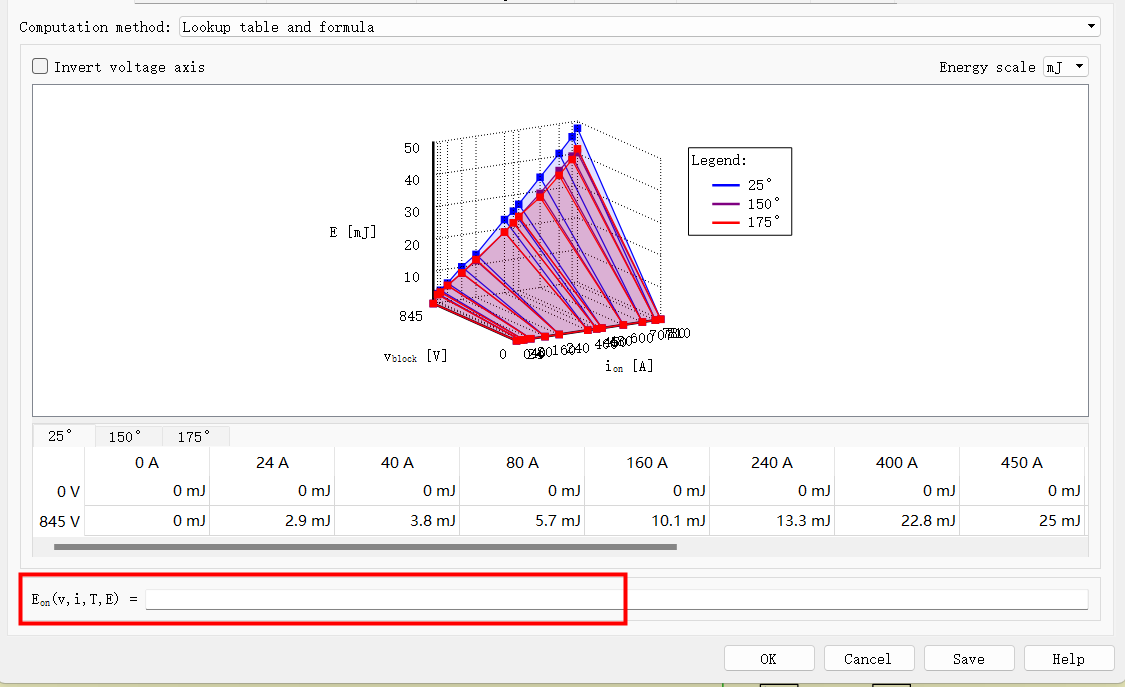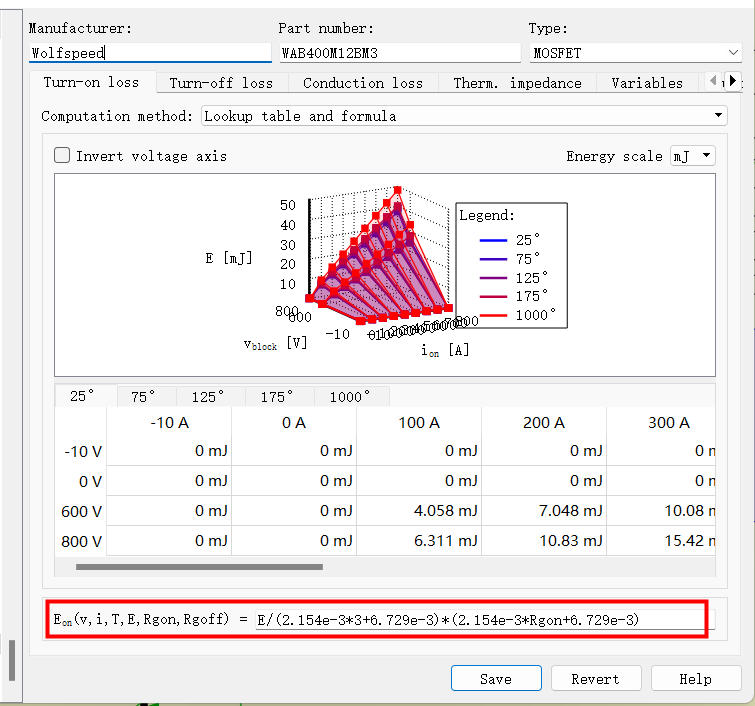EPM3-1200-0017D1芯片的plecs模型
I want to get the Plecs model of EPM3-1200-0017D1. At the same time, how can I get the formula in the Plecs model?
Look forward to your reply.
Comments
-
Hello, thank you for your message. A member of our technical team is looking into your questions and we will respond shortly.
0 -
Hello kevenyear,
We do not support PLECs models for dies. We will be happy to share the SPICE model under a NDA. Would you be interested in starting a NDA process?
0 -
Hello TBhatia,
I'm sorry that my expression may be wrong. I actually want to know how you fit a formula to express Eon and Eoff under different external gate resistances, rather than needing its model.
such as:
0 -
Hi kevenyear,
The formula input for PLECS is entirely flexible, you can use any scaling function you like to manipulate the energy found in your lookup table. For example, this thread discusses how you might use the formula for Tj dependence in Err: https://forum.wolfspeed.com/discussion/375/ccb021m12fm3-plecs-model-no-body-diode-recovery-loss-err-chart
You can define the formula in terms of any variables defined in the equation. So for "E(v,i,t,E,Rgon,Rgoff)" the valid input variables are voltage, current, and temperature (from the electrical circuit); energy (from you lookup table); and Rgon or Rgoff (user defined variables). For example, if I add a new test variable to the CAB425M12XM3 model:
I will then get a new input to my equations:
Our current methodology for defining such equations is to curve fit the data of Eon(Rg) or Eoff(Rg). This can easily be done in Excel (consider using https://apps.automeris.io/wpd/ to convert datasheet figures into Excel data):
I selected a second order polynomial fit (it looks reasonable enough and isn't computationally expensive), but you can use most standard equations supported by Octave (which you can think of as an open source alternative to MATLAB). For example sqrt(), log(), etc.
Note that this formula is multiplying the table values by a scaling factor, so we need to normalize the equation's output value. So in this example model, the lookup table uses data which was tested with Rg=0Ω. Therefore we should divide the equation by its results at Rgoff=0, or 3.8193.
Let me know if you have any additional questions!
Blake
0 -
Hi Blake,
Thank you very much for your reply. I probably know how to create it. Thank you very much. Do you have a detailed datasheet of the EPM3-1200-0017D1 chip, such as a graph containing the relationship between grid resistance, temperature, voltage, current and switching loss, which I need them to fit.
Look forward to your reply!
Keven
0 -
Hello kevenyear,
Any other details about this product or a detailed document like the one you're asking, can only be shared under a NDA.
However, if you want to model the switching losses for EPM3-1200-0017D1, you can also use the PLECs model for the discrete device C3M0016120K. The electrical performance will be similar to EPM3-1200-0017D1 and you can modify the thermal impedance from Junction to Case and use a number closer to your form of packaging for EPM3-1200-0017D1.
The PLECs model for our discrete MOSFETs can be downloaded from: https://www.wolfspeed.com/tools-and-support/power/ltspice-and-plecs-models/
Thank you!
0 -
Hi, I hope that this answered your question. I will close this discussion for now but if you have a follow up question, please "Start a New Discussion" and we would be glad to support you further.
0




